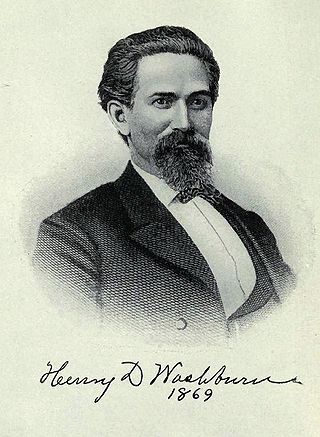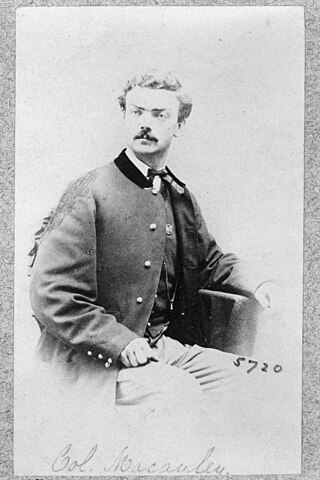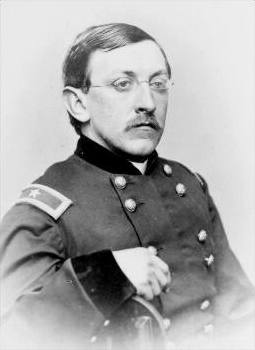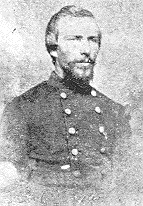
XXII Corps was a corps in the Union Army during the American Civil War. It was created on February 2, 1863, to consist of all troops garrisoned in Washington, D.C., and included three infantry divisions and one of cavalry. Many of its units were transferred to the Army of the Potomac during Grant's Overland Campaign.
The 14th Indiana Infantry Regiment, called "The Gallant Fourteenth," was an infantry regiment and part of the Union Army's celebrated "Gibraltar Brigade" during the American Civil War. Mustered on June 7, 1861, it was the state's first regiment organized for three years' service. The 14th Indiana served in many major campaigns and battles mostly in the Eastern Theater. During its three years of service, the regiment had a total of 222 casualties.
The 12th West Virginia Infantry Regiment was an infantry regiment that served in the Union Army during the American Civil War. The regiment was particularly distinguished for its successful attack on Fort Gregg during the 1864 to 1865 Siege of Petersburg, receiving a golden eagle for its flagstaff as a token of appreciation from corps commander John Gibbon.

Henry Dana Washburn was a U.S. Representative from Indiana and a colonel and was breveted twice as brigadier general and major general in the Union Army during the American Civil War.
The 27th Indiana Infantry Regiment was an infantry regiment that served in the Union Army during the American Civil War.

Daniel McCauley (1839–1894) was an American politician and Union Army office during the American Civil War.

George Henry Chapman was an American sailor, newspaper editor, lawyer, and soldier. He served in the United States Navy during the Mexican–American War and as a Union Army general during the American Civil War. Later in life he was a judge and a state legislator.

The 70th Regiment Indiana Infantry was an infantry regiment that served in the Union Army during the American Civil War.
The 12th Indiana Infantry Regiment was an infantry regiment in the Union Army during the American Civil War.
The 49th Regiment Indiana Infantry was an infantry regiment that served in the Union Army during the American Civil War.
The 46th Regiment Indiana Infantry was a regiment of the Union Army during the American Civil War.
The 47th Regiment Indiana Infantry was an infantry regiment that served in the Union Army during the American Civil War.
The 48th Regiment Indiana Infantry was an infantry regiment that served in the Union Army during the American Civil War.
The 13th Indiana Infantry Regiment was an infantry regiment in the Union Army during the American Civil War.
The 12th Connecticut Infantry Regiment was an infantry regiment that served in the Union Army during the American Civil War.

The 93rd Pennsylvania Volunteer Infantry was an infantry regiment that served in the Union Army during the American Civil War.

The 111th Pennsylvania Volunteer Infantry was an infantry regiment that served in the Union Army during the American Civil War. It was noted for its holding the high ground at the center of the line at Antietam as part of Stainrook's 2nd Brigade, Greene's 2nd Division of Mansfield's XII Corps.
The 27th Pennsylvania Volunteer Infantry was an infantry regiment that served in the Union Army during the American Civil War.
The 12th Pennsylvania Cavalry was a cavalry regiment that served in the Union Army during the American Civil War.

The 12th Louisiana Infantry Regiment was a unit of volunteers recruited in Louisiana that fought in the Confederate States Army during the American Civil War. Formed in August 1861, the regiment served in the Western Theater of the American Civil War and was unique in that there were 12 companies. The regiment garrisoned Island Number Ten before being stationed at Fort Pillow. It fought at Second Corinth in 1862 and Champion Hill and Jackson in 1863. A detachment served during the Siege of Vicksburg and was captured. In 1864, the regiment fought in the Meridian, Atlanta, and Franklin–Nashville campaigns, suffering heavy losses at Peachtree Creek and Franklin. It fought at Bentonville in 1865 before surrendering with General Joseph E. Johnston.








